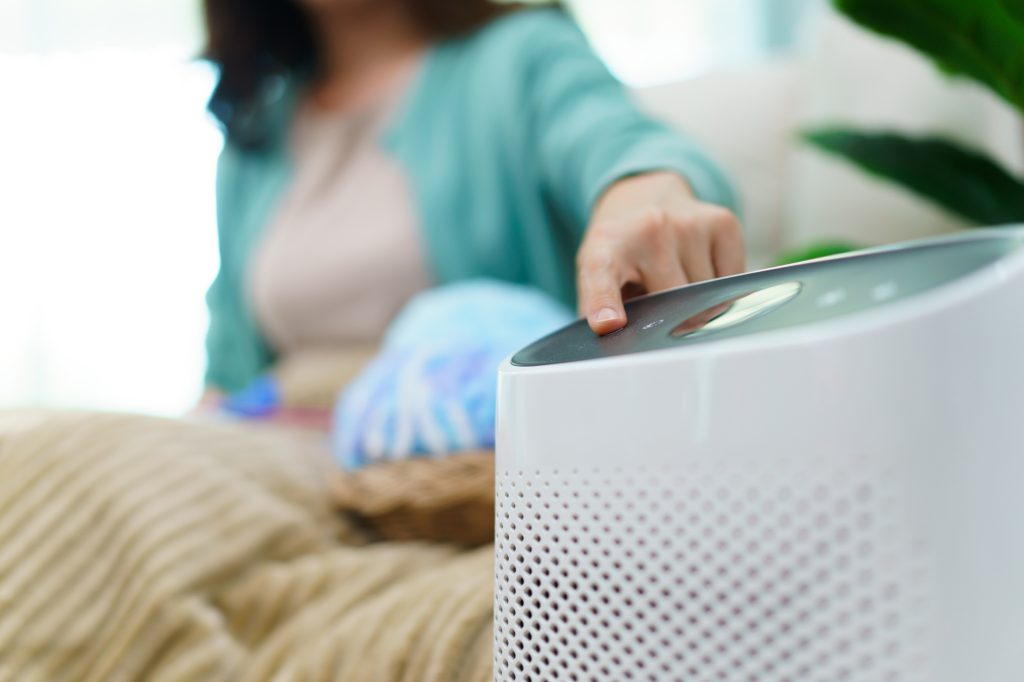Indoor Air Quality: Effects On Respiratory Health

Being indoors doesn’t always mean escaping pollution. Many homes can harbor poor indoor air quality that could affect the respiratory health of their occupants. Thus, it’s vital to keep an eye on the air circulation systems in your home to maintain a healthy environment for everyone.
Wondering how to evaluate your home’s indoor air quality? You’ve landed on the right page. In this article, learn more about common air pollutants, their health risks, and how to boost your home’s air quality.
Common Indoor Air Pollutants
- Particulate Matter
Certain air particles can be harmful to respiratory health. Inhaling finer particles may lead to serious health issues, such as respiratory and cardiovascular diseases. Consider investing in the best air purifier to minimize contact with particulate matter. Such devices are engineered to capture and eliminate the particles, making a cleaner indoor atmosphere.
- Tobacco Smoke
It’s no secret that tobacco smoke is detrimental. The smoke carries chemicals and toxins in the air that, when inhaled, could cause lung cancer, respiratory infections, and worsen asthma.
- Secondhand Smoke
Non-smokers aren’t safe either; secondhand smoke exposure may still affect your respiratory health. It can trigger asthma attacks in children and worsen symptoms in people with existing respiratory conditions.
- Radon
This colorless, odorless gas is a silent intruder in many homes. It seeps in through the ground and can reach harmful levels if not adequately vented. Radon exposure, like the risks of secondhand smoke, ranks highly among the causes of lung cancer.
- VOCs (Volatile Organic Compounds)
Products like paints, varnishes, and even air fresheners all emit VOCs. Exposure to these pollutants may result in sore throats, liver or kidney damage, central nervous system issues, or a heightened cancer risk. People in construction and homeowners who do DIY renovations are more susceptible to these pollutants.
- Biological Pollutants
In many households, biological contaminants like molds, dust mites, and pollen are prevalent, often leading to allergy and asthma attacks characterized by sneezing, wheezing, and breathing difficulties. Thankfully, they’re usually easy to manage and mitigate.
Respiratory Health Conditions Affected By Indoor Air Pollution
- Asthma
Without proper indoor air quality, you might experience a spike in asthma symptoms. Pollutants may intensify the inflammation of your airways, leading to frequent and severe asthma attacks.
Poor air quality indoors may reduce the effectiveness of medications and prolong recovery times. A focus on maintaining optimal indoor air quality helps control and reduce the frequency and intensity of asthma symptoms.
- Chronic Obstructive Pulmonary Disease (COPD)
If you’re living with COPD, indoor air pollutants can be particularly harsh. Chemicals from household cleaning agents or VOCs from paint can exacerbate COPD symptoms. These irritants attack the respiratory system, worsening coughs and shortness of breath. Clean, well-ventilated air is fundamental in COPD management, as it helps reduce severe symptoms and the need for hospital admissions.
- Allergies
Allergies can flare up with exposure to biological pollutants lingering in indoor air. Mold spores, pollen, and pet dander are the common culprits that activate allergy symptoms.
If sneezes, stuffy noses, or itchy eyes become a regular nuisance, indoor air pollutants could be the culprits. Reduce them by enhancing indoor air quality to alleviate allergy symptoms, providing comfort and relief.
- Lung Infections
Poor indoor air quality increases the risk of developing lung infections. The presence of pollutants such as mold or mildew, particularly in damp conditions, amplifies the likelihood of contracting bacterial and viral infections in the lungs.
If you have kids, they may be more susceptible to lung infections, including pneumonia, a common infection among children. Improving indoor air quality lessens these symptoms and serves as a preventive measure against recurrent respiratory conditions.
Identifying and Assessing Indoor Air Quality Problems
Recognizing poor indoor air quality can be as straightforward as identifying a musty odor or visible mold. These are telltale signs of excess humidity and inadequate ventilation. Indoor air assessment tools help you pinpoint and measure pollution levels.
Additionally, professional services can conduct a thorough assessment, offering expertise in identifying and resolving indoor air quality issues. Consider hiring them when you want a proper inspection of your home.
Tips For Improving Indoor Air Quality
- Reduce Sources Of Pollution
Start by identifying and mitigating sources of pollution. For example, ensure that appliances are well-maintained to reduce emissions. If you smoke, consider cutting back or quitting altogether.
- Ventilate Spaces Properly
Increase ventilation by opening windows and using fans. This simple step can significantly improve indoor air quality by diluting indoor pollutants and pushing bad air out.
- Clean Regularly
Regularly cleaning your home reduces indoor dust, pet dander, and other particulate matter. Use a vacuum with a HEPA filter and avoid cleaning products that emit VOCs.
- Use Air Purifiers
Air purifiers capture pollutants like particles, VOCs, and allergens, promoting cleaner, healthier indoor air. Choose an effective air purifier to capture and remove various pollutants efficiently.
Conclusion
Indoor air quality is a significant factor in respiratory health. From the dangers of particulate matter to the silent threat of radon and VOCs, awareness of and addressing indoor pollutants is essential. Respiratory conditions like asthma, COPD, allergies, and lung infections can be triggered or worsened by poor indoor air quality.
Don’t delay in identifying and addressing these issues – your health depends on it. Take actions like improving ventilation and considering using air purifiers to safeguard your health and your family. Prioritize your indoor air quality – your respiratory health depends on it. Every breath should promote your health, not compromise it.
Article by William Lindsay
William Lindsay is a freelance writer and health enthusiast. He has researched and written extensively on the topic of health, and his work has been featured in various publications. William is committed to helping people create healthy indoor environments for themselves and their loved ones.






